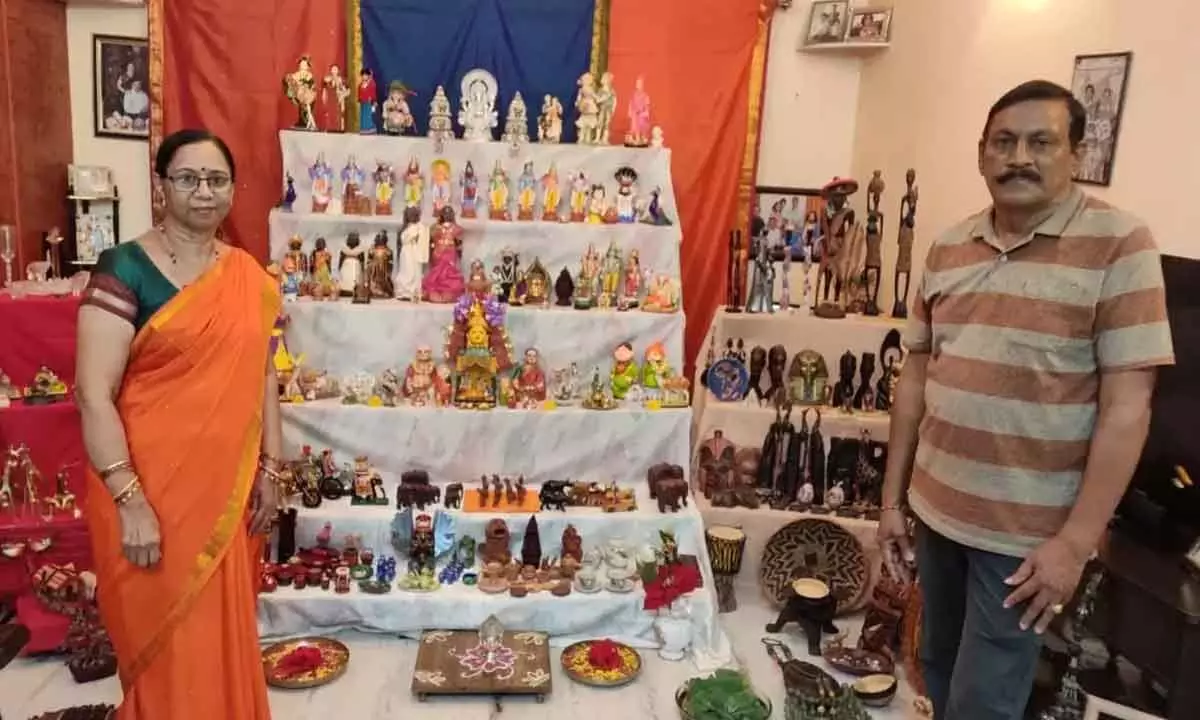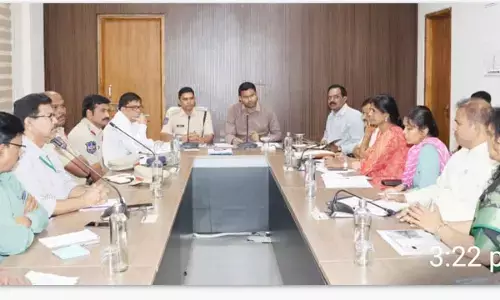Global collection showcased by local couple

The couple has installed between 2,000 and 3,000 dolls in their home, drawing large crowds eager to witness this beautiful display. Suma and Murugendrappa have been observing this tradition for over 22 years, with each year’s display becoming more elaborate
Davanagere: The tradition of decorating and displaying dolls during Dussehra has its roots in the 18th century and remains an integral part of the celebration in many households across Karnataka. Murugendrappa and Suma, a couple from Davangere with a passion for travel and cultural preservation, have taken this tradition to the next level by showcasing a unique collection of dolls they’ve gathered from around the world. Their display, which features thousands of dolls, has become a focal point of attention during the Dussehra festivities.
The couple has installed between 2,000 and 3,000 dolls in their home, drawing large crowds eager to witness this beautiful display. People are seen admiring the intricate designs and cultural significance of each doll while clicking selfies. Visitors are especially captivated by the foreign dolls that the couple has accumulated over the years from their travels to more than 30 countries.
This tradition, called “Gombe Habba,” (doll festival) sees dolls being set up from the first day of Dussehra until Vijayadashami, the 10th day of the festival. Suma and Murugendrappa have been observing this tradition for over 22 years, with each year’s display becoming more elaborate.
The couple's doll collection includes pieces from countries such as London, Paris, Germany, Italy, Switzerland, Ghana, Kenya, and Dubai, to name a few. Dolls from India’s famous Channapatna and Mysore, as well as from Tamil Nadu and Andhra Pradesh, also play a significant role in their display. Murugendrappa, a former textile engineer who worked in Nigeria for 21 years, has particularly focused on collecting tribal dolls from Africa, including representations of the Ibo, Erobo, Haus, and Pulanis tribes.
From God figures to traditional tribal dolls and even modern representations like a Dubai doll or mummy doll, the collection beautifully represents various cultures and histories.
The tradition of placing dolls during Dussehra is believed to have originated in Mysore during the 18th century. It later spread across Karnataka and neighbouring states such as Andhra Pradesh, Telangana, and Tamil Nadu. Known as “Gombe Habba” in Karnataka, this doll festival has gained prominence for its cultural and historical significance.
Earlier, when daughters moved to their husband's home after marriage, they were given dolls as a part of their dowry. These dolls were to be enshrined during Dussehra in the new household, marking the continuation of this cherished tradition. The custom is believed to have been prominent even during the reign of the Mysore kings.
Each doll in the couple’s collection tells a story, many of which are rooted in mythology. The display includes representations of Hindu gods and goddesses like Krishna, Narasimha, and Ganesha, as well as figures like Swami Vivekananda, Buddha, and Nataraja.
From a wedding scene featuring bride and groom dolls to small kitchen utensils and vehicles like cars and lorries, the diversity of the collection is mesmerizing.
This remarkable display has become a point of pride for Davangere, drawing visitors from across the city who come to witness not only the dolls but the beautiful stories they represent.
The doll display by Murugendrappa and Suma during Dussehra not only keeps an important tradition alive but also bridges cultural gaps by showcasing a variety of dolls from around the globe. With over two decades of dedication to this tradition, the couple has enriched their local community, turning their home into a museum of global heritage during the festive season.
This tradition continues to bring joy and cultural education to visitors, demonstrating how the practice of doll decoration during Dussehra remains a living tradition that evolves with time.

















